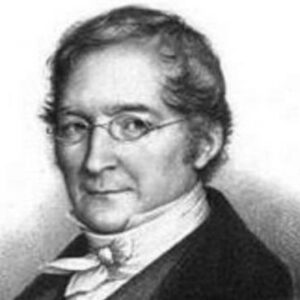Amedeo Avogadro was an Italian scientist who coined the term “Avogadro’s law.” He is credited with inventing the atomic-molecular hypothesis, as he was the first scientist to recognize that elements may exist as molecules rather than as individual atoms. Avogadro’s law, his greatest contribution to science, asserts that equivalent volumes of gases at the same temperature and pressure will contain an equal number of molecules. As the son of a prominent lawyer, he followed in his father’s footsteps and graduated in ecclesiastical law as a young man. His interest in law, however, diminished as he developed a strong interest in what was then called positive philosophy: physics and mathematics. He began studying mathematics and physics privately and quickly expanded into research after deciding to devote his life to science. He abandoned his legal career and became an educator, which he remained for the remainder of his life. He was a productive researcher who conducted considerable research on the behavior of fundamental particles of matter and proposed the concept that equal volumes of all gases at the same temperature and pressure contain the same number of molecules. His significant contribution to chemistry, on the other hand, was recognized only after his death.
Childhood & Adolescence
Lorenzo Romano Amedeo Carlo Avogadro di Quaregna e di Cerreto was born into a noble family on 9 August 1776 in Turin, Piedmont-Sardinia. His father was Filippo Avogadro, Conte di Quaregna e Cerreto, a renowned lawyer and senator from northern Italy’s Piedmont area.
He was an intelligent young man who excelled academically. He followed in his father’s footsteps and studied law, graduating in 1792 with a bachelor’s degree in jurisprudence. Four years later, he earned a doctorate in ecclesiastical law.
Amedeo Avogadro’s Career
He pursued a legal career and was appointed secretary to the Eridani prefecture in 1801. Around this time, he developed an interest in physics and mathematics and began studying them secretly under the tutelage of Professor Vassalli Eandi, a notable mathematical physicist.
Soon afterward, he began his scientific investigations, concentrating particularly on electricity. In 1803, he co-authored his first scientific work with his brother Felice. This article investigated the electrical properties of salt solutions.
In 1804, he was elected a corresponding member of Turin’s Academy of Sciences. He had realized by this point that he was destined for a scientific career and had resigned from his law practice.
He entered academia in 1806 and began teaching mathematics and physics at a Turin high school. He was appointed professor of natural philosophy at Vercelli’s Royal College in 1809, a position he held until 1820.
In 1811, he made what would become his most significant contribution to science: the theory that equal quantities of all gases at constant temperature and pressure contain the same number of molecules. He also used this concept to explain the French chemist Joseph-Louis Gay-law Lussac’s for combining quantities of gases.
He is credited with discovering the existence of elementary monatomic, triatomic, and tetratomic molecules. He also correctly calculated the molecular formulas for water, nitric and nitrous oxides, ammonia, carbon monoxide, and hydrogen chloride in 1811.
In 1820, he was appointed to the University of Turin’s first chair in mathematical physics. In 1821, after conducting an additional study, he discovered the proper formula for alcohol and ether.
In 1822, the university was shuttered due to civil unrest, and Avagadro lost his post. In 1834, Avogadro was reappointed to the position.
Between 1843 and 1850, he published four memoirs on atomic volumes and used them to assign affinity numbers to elements. In 1850, he retired.
His Significant Works
He proposed what is now known as Avogadro’s law. It is an experimental gas law that establishes a relationship between the volume of a gas and the amount of gas substance present. According to the law, “equivalent quantities of all gases have the same number of molecules at the same temperature and pressure.”
In 1811, Avogadro postulated that regardless of the composition of the gas, the volume of a gas (at a given pressure and temperature) is proportional to the number of atoms or molecules. The Avogadro constant, which bears his name, is the number of constituent particles, often atoms or molecules, contained in a mole of a substance.
Personal History and Legacies
He married at a rather late age. In 1815, he married Felicita Mazzé. The couple was blessed with six children.
On 9 July 1856, he died at the age of 79.
A diligent and modest man, he received little recognition during his lifetime for his accomplishments, however, his contributions to science were recognized years after his death.
Estimated Net worth
Amedeo is one of the wealthiest physicists and is included in the list of the most popular physicists. According to our estimate, Amedeo Avogadro’s net worth is around $1.5 million, as reported by Wikipedia, Forbes, and Business Insider.


